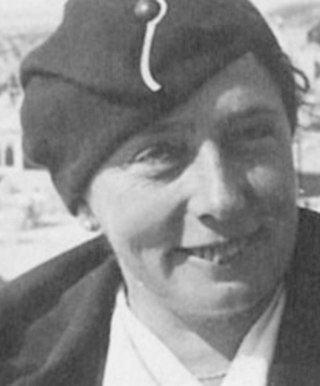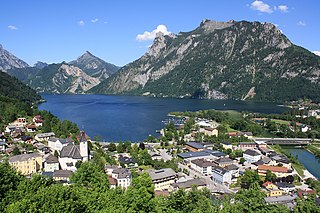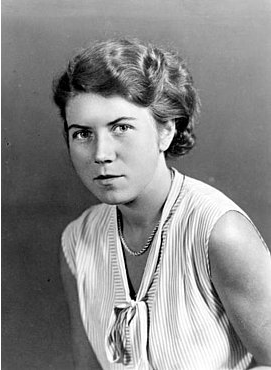Related Research Articles

The Salzkammergut is a resort area in Austria, stretching from the city of Salzburg eastwards along the Alpine Foreland and the Northern Limestone Alps to the peaks of the Dachstein Mountains. The main river of the region is the Traun, a right tributary of the Danube.

Strobl is a municipality of the Salzburg-Umgebung District (Flachgau), in the northeastern portion of the Austrian state of Salzburg, right on the border with Upper Austria. It comprises the Katastralgemeinden of Aigen, Gschwendt, Strobl, and Weißenbach.

Bad Ischl is a spa town in Austria. It lies in the southern part of Upper Austria, at the river Traun in the centre of the Salzkammergut region. The town consists of the Katastralgemeinden Ahorn, Bad Ischl, Haiden, Jainzen, Kaltenbach, Lauffen, Lindau, Pfandl, Perneck, Reiterndorf and Rettenbach. It is connected to the village of Strobl by the river Ischl, which drains from the Wolfgangsee, and to the Traunsee, into which the stream empties. It is home to the Kaiservilla, summer residence of Austro-Hungarian monarchs Emperor Franz Joseph I and Empress Elisabeth. In 2024, Bad Ischl will be one of the European Capitals of Culture – the third city in Austria after Graz (2003) and Linz (2009).
Josef "Sepp" Plieseis was an Austrian resistance fighter against the Nazi regime.
The Austrian resistance launched in response to the rise of the fascists across Europe and, more specifically, to the Anschluss in 1938 and resulting occupation of Austria by Germany.

Johanna "Hanna" Kirchner was a German opponent of the Nazi régime.

Ebensee am Traunsee is a market town in the Traunviertel region of the Austrian state of Upper Austria, located within the Salzkammergut Mountains at the southern end of the Traunsee. The regional capital Linz lies approximately 90 km (56 mi) to the north, nearest towns are Gmunden and Bad Ischl. The municipality also comprises the Katastralgemeinden of Langwies, Oberlangbath, Rindbach, Kohlstatt and Roith.

Maria "Mimi" Terwiel was a German resistance fighter against the Nazi regime. She was active in a group in Berlin that wrote and distributed anti-Nazi and anti-war appeals. As part of what they conceived as a broader action against a collection of anti-fascist resistance groups in Germany and occupied Europe that the Abwehr called the Red Orchestra, in September 1942 the Gestapo arrested Terwiel along with her fiancée Helmut Himpel. Among the leaflets and pamphlets they had copied and distributed for the group were the July and August 1941 sermons of Clemens August Graf von Galen which denounced the regime's Aktion T4 programme of involuntary euthanasia.

Altaussee is a municipality and spa town in the district of Liezen in Styria, Austria. The small village is nestled on the shores of the Lake Altaussee, beneath the Loser Plateau. Occupying an area of 92 km², Altaussee is home to 1,777 people. The municipality includes two cadastral communities: Altaussee and Lupitsch. The designated climatic spa is within the Salzkammergut region. Altaussee has the biggest salt deposits of Austria, which are still mined today.

Marta Husemann was a German actress and anti-Nazi Resistance fighter in the Red Orchestra.
Franz Kain was an Austrian writer and politician.
Marianne "Mariandl" Feldhammer was an Austrian resistance activist during the Nazi years. She was one of the most important women in the "Willy-Fred" group around Sepp Plieseis. She was the only woman who knew the way to the so-called "Hedgehog" used by anti-Nazi partisans, to which by the end of the war she had herself made several deliveries of food and/or messages.
Grete Jost was a Viennese communist resistance activist against Austrofascism and, after 1938, against National Socialism.
Ottilie "Tilly" Spiegel was an Austrian political activist, first as a member of the Communist Party and then as part of the wartime resistance. After her actions had earned her a term of imprisonment during the Austrofascist period she fled the country, ending up as in Paris as a member of the French Resistance. Her parents were murdered by the Nazis but five siblings managed to emigrate to England or to the United States. In 1945 the merger combining Germany and Austria was reversed at the insistence of the occupying powers whose military victory had put an end to the Hitler regime. Tilly Spiegel returned to Vienna and was one of the first researchers to study the histories of victims of National Socialism. Books that she published were frequently consulted and quoted by subsequent researchers.
Ernestine Diwisch was an Austrian political activist (KPÖ). After 1938 she became caught up in anti-government resistance. She was arrested and taken to Berlin where she faced the special People's Court. She was convicted and sentenced to death on 8 February 1944. She was taken back to Vienna and executed on the guillotine that had been installed at the city's district court complex shortly after the German National Socialists had taken control of Austria.
Rosa Hofmann was an Austrian Communist Youth leader who became a resistance activist during the 1930s. In 1943, she was arrested and taken to Berlin where she faced trial, conviction and execution.
Maria Cäsar was an Austrian political activist (KPÖ) who after the Anschluss in 1938 became a resistance activist. She was among the survivors: during and beyond the occupation years. After the second World War Maria Cäsar played her part in testifying about her experiences of Austria under National Socialism to younger generations.
Maria Plieseis was an Austrian anti-government activist in her home region, the Salzkammergut. She married and was widowed in 1941 and joined the Communist Party in 1942, and by 1947, despite having ended up in the part of Austria under American military occupation, she emerged as a high-profile Communist activist. She was listed for prosecution as a defendant at the trial which followed the "Bad Ischl Milk Demonstrations", but took temporary refuge in the Soviet occupation zone and thereby avoided US military justice).
Gisela Tschofenig was an (illegal) Austrian Communist political activist who after 1938 became an anti-government resistance activist. In 1945 fellow detainees at the Schörgenhublabour camp, who had heard overnight shots on 27/28 April, after seeing Tschofenig called outside with two other women, had their fears confirmed the following morning when one of the camp guards was seen to be wearing their friend's "mountain boots".
Josef Peskoller was an Austrian railway worker, resistance activist and Communist Party (KPÖ) politician. Peskoller and his wife Maria organized resistance activities during World War II. Josef suffered periods of imprisonment both during Austrofascism and after Anschluß, whilst Maria was executed after a Gestapo raid in 1944. After the war, Josef Peskoller was elected to the Carinthian Landtag.
References
- 1 2 3 4 5 "Theresia Pesendorfer (1902-1989)". KPÖ Oberösterreich, Linz. 21 June 2012. Retrieved 19 May 2021.
- 1 2 3 4 5 6 "Theresia Pedendorfer (1902-1989)". Auf den Spurender Partisanen im Salzkammergut .... Widerstand im Bezirk Gmunden .... Schlüsselrolle in der Widerstandsbewegung. p. 15. Retrieved 19 May 2021.
- 1 2 3 4 5 6 7 8 9 10 Stephan D. Yada-Mc Neal (13 July 2018). Resi Pesendorfer. BoD – Books on Demand. pp. 224–227. ISBN 978-3-7528-2571-8.
{{cite book}}:|work=ignored (help) - 1 2 3 4 5 Christine Kanzler (author); Ilse Korotin (editor-compiler) (2016). Pesendorfer Theresia (Resi), geb. Laimer; Hausgehilfin und WiderstandskämpferinGeb. Lauffen, Bad Ischl, 21.6.1902 Gest. 31.10.1989. Vol. 3 P-Z. Böhlau Verlag Wien. pp. 2507–2508. ISBN 978-3-205-79590-2 . Retrieved 19 May 2021.
{{cite book}}:|author1=has generic name (help);|work=ignored (help) - ↑ Peter Kammerstätter (27 April 2020). "1945: Die Widerstandsbewegung im oberen Salzkammergut". KPÖ Oberösterreich, Linz. Retrieved 19 May 2021.
- ↑ Leo Furtlehner. "Zum Widerstand der KPÖ im Salzkammergut". Auf den Spurender Partisanen im Salzkammergut .... Widerstand im Bezirk Gmunden .... Auf dem Bodenjahr hundertelanger Tra ditionen. pp. 2–3. Retrieved 19 May 2021.
- ↑ Susanne Rolinek. "Ausseer Land und Bad Ischl: Härteste Bastion des Widerstandes und Schatzkammer der Nazis". Czernin Verlag, Wien. Retrieved 19 May 2021.
- ↑ Ingrid Moser (1 April 2019). "1944: Das Rückgrat der Partisanen". KPÖ Oberösterreich, Linz. Retrieved 20 May 2021.
- 1 2 Wolfgang Quatember. ""IGEL" and Resistance". Universalmuseum Joanneum GmbH (Institut für Kunst im öffentlichen Raum), Graz. Retrieved 20 May 2021.
- ↑ "... In the valley". [semi-]Permanent projects .... Florian Hüttner: Hideaway (Turtle). Art in Public Space, Graz. Retrieved 20 May 2021.
- ↑ Martin Schott (24 August 2020). "Nachbericht von der Wanderung zum IGEL". Am 22. August 2020 organisierten die Grünen Bad Ischl eine zeitgeschichtliche Wanderung zum Versteck der Widerstandsgruppe Willy-Fred. Retrieved 20 May 2021.
- 1 2 3 4 Christian Angerer; Maria Ecker (7 August 2015). Resi Pesendorfer. StudienVerlag. pp. 330–331. ISBN 978-3-7065-5757-3.
{{cite book}}:|work=ignored (help) - ↑ "Widerstand im Salzkammergut Geschichte und Erinnerung .... Frauen im Widerstand" (PDF). Zeitgeschichtemuseum Ebensee. Retrieved 20 May 2021.
- ↑ "Warum der Name Willy-Fred". Hausverein Willy-Fred, Linz. Retrieved 20 May 2021.
- ↑ Rolinek, S., Lehner, G. & Strasser, C. (2009) Im Schatten der Mozartkugel – Reiseführer durch die braune Topografie von Salzburg. Wien: Czernin.